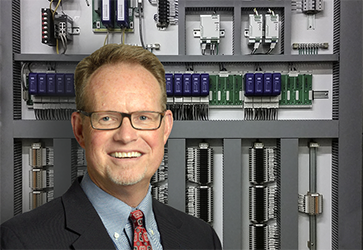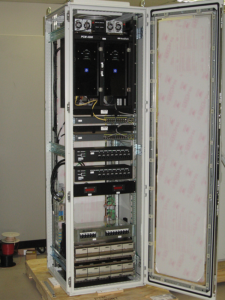
Taking an incremental, multi-stage approach when upgrading aging DCS systems
Mike Edwards
Features DCS distributed control systems NovaTech process manufacturing Dwight Wood
Dwight Wood As Distributed Control Systems (DCS) age, there can be increasing risks to the process manufacturer. An old or obsolete DCS system may no longer be supported by the original supplier, spare parts may no longer be readily available, and system performance issues may begin to appear.
With some DCS systems now decades old, system users often know they need to upgrade but find the task daunting given the cost and potential for disruption of operations while the new system is brought online.
Even if process manufactures have installed newer equipment alongside legacy components, there can be considerable challenges maintaining disparate legacy systems, associated spare parts and the different skill sets required to support multiple control system platforms. This can lead to “islands of automation” that diminish the effectiveness of a user to integrate, control and optimize the entire process from beginning to end. It may be that the system user has simply outgrown the existing control system due to increased production demands and/ or newly added processes.
“Most process manufacturers are looking to maximize their automation investments and run them as long as they can before upgrading or replacing,” explains Dwight Wood, VP Global Sales for Owings Mills, MD-based NovaTech LLC Process Division whose D/3 DCS system solution was introduced 38 years ago as the first hybrid batch and continuous control architecture. “A number of process manufacturers have come to us with I/O, controllers and even servers that are 30 to 40 years old.”
When process manufacturers ultimately decide to move forward on an upgrade, however, they often find that their DCS supplier has implemented a new generation of technology that lacks a cost and mission effective migration path to update the existing system often requiring a rewrite of applications programming or a complete “rip and replace.”
Fortunately, ripping and replacing a dead-ended DCS system is not required. “Addressing the vulnerabilities that are present with a legacy DCS does not always require a disruptive all-at-once approach,” says Wood. “For a plant of any scale running at or near capacity, taking down processing lines for any amount of time can be extremely expensive in terms of lost production and business impact.”
Instead, many engineering, operations and procurement teams are opting for a multi-stage implementation over a total system overhaul by phasing in newer DCS servers, controllers and applications. This approach is more affordable and less disruptive, while still allowing gaps, points of pain and cybersecurity risks to be addressed immediately.
The multi-stage migration approach can often begin by integrating new DCS components with new and existing I/O devices. As I/O is one of the most significant investments in an automation upgrade, I/O drops can be replaced in a phased manner over time allowing for spare parts capture from decommissioned drops, phased implementation aligned with plant outage limitations and staggered financial investment.
Another consideration is the need to integrate the DCS system with the existing enterprise systems. “Customers want more than an effective implementation of the Level 2 automation system,” says Wood. “They often want improved data capture and the conversion of that data into useful knowledge presented in desktop KPI dashboards that can be utilized at the manufacturing execution level and/or the enterprise ERP level.”
A DCS system is a hub of a processor’s operations monitoring key variables such as flow, applied temperatures, pressure, level and material conveying/handling. The operator user interface brings all the data that is collected from production equipment and the controllers process and present it in a highly “human factored” manner for an operator, generating trends, alarms, etc.
Standard Operating Procedures, maintenance records, and other information are also available in desktop application formats. The information can be viewed using common Web browsers to display data from multiple plant sites from anywhere in the world.
A DCS replacement is a significant investment that is designed as a long-term contribution to operations. Two key considerations are the system’s migration path and the overall DCS lifecycle cost.
“A DCS sits on top of an inherently dynamic processing environment made more so as new equipment is added, production lines are expanded, and as issues like obsolescence and cybersecurity present new challenges over time,” explains Wood.
“That is easier to navigate if there is a well-defined system life cycle plan and migration path forward that includes a carefully thought-out execution plan for success.”
This article was contributed by NovaTech.
Print this page
